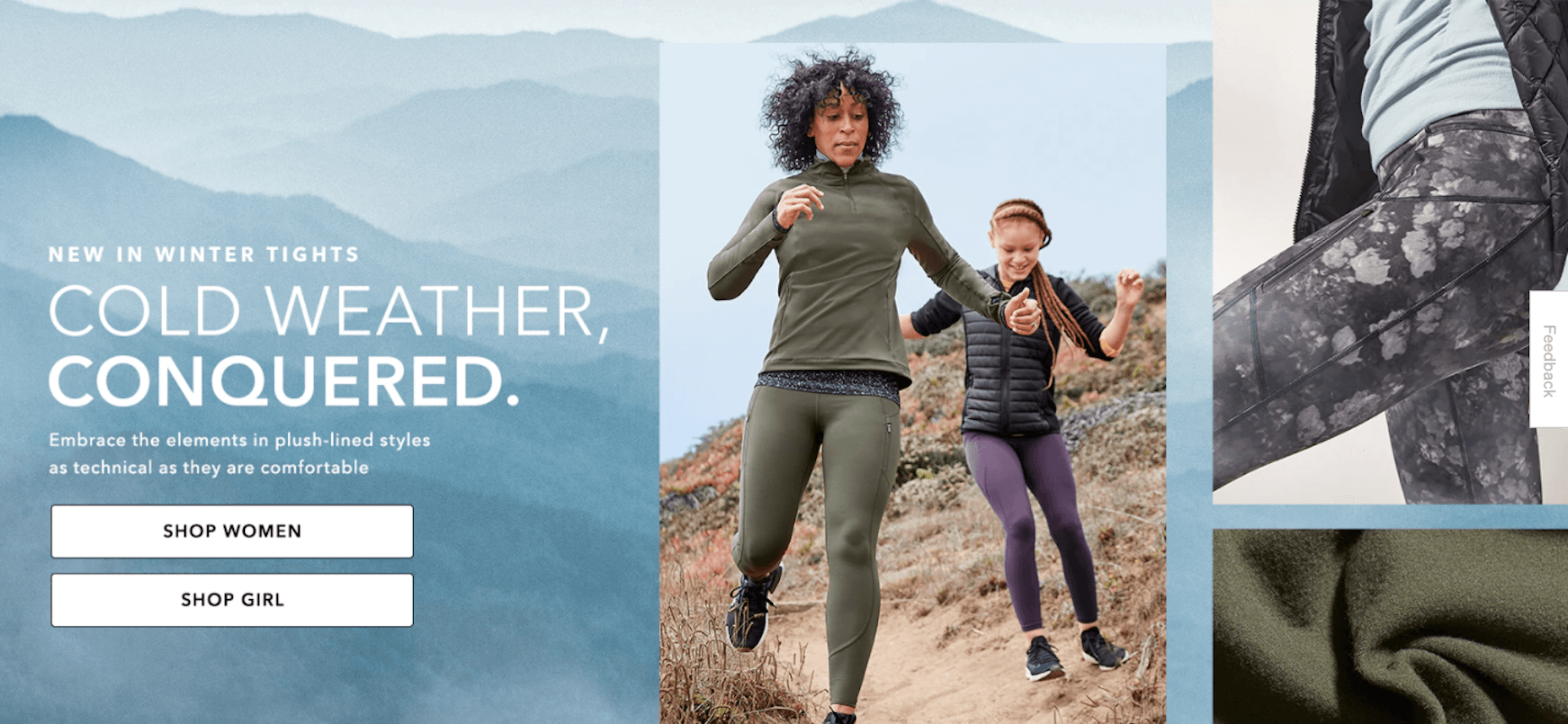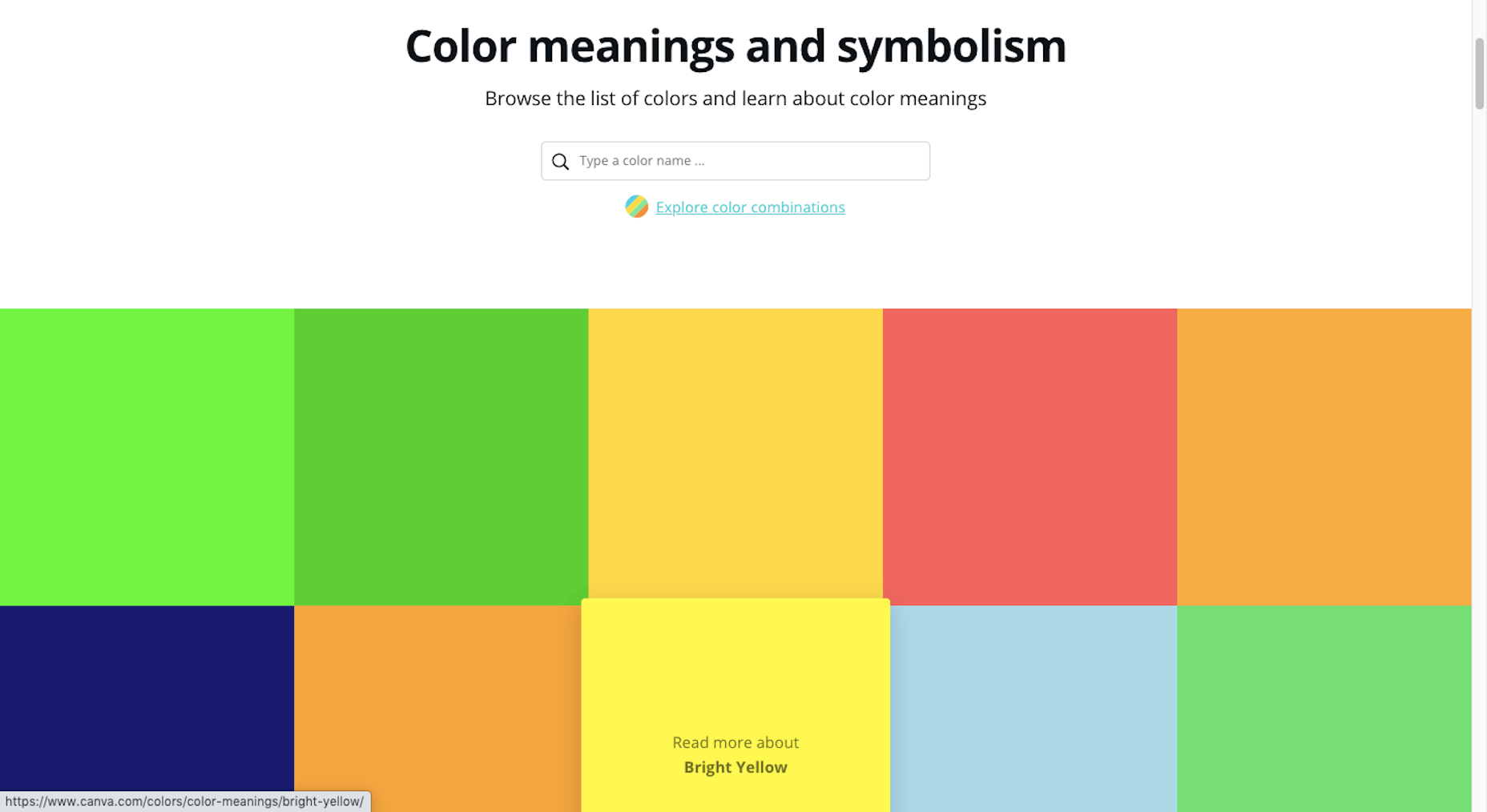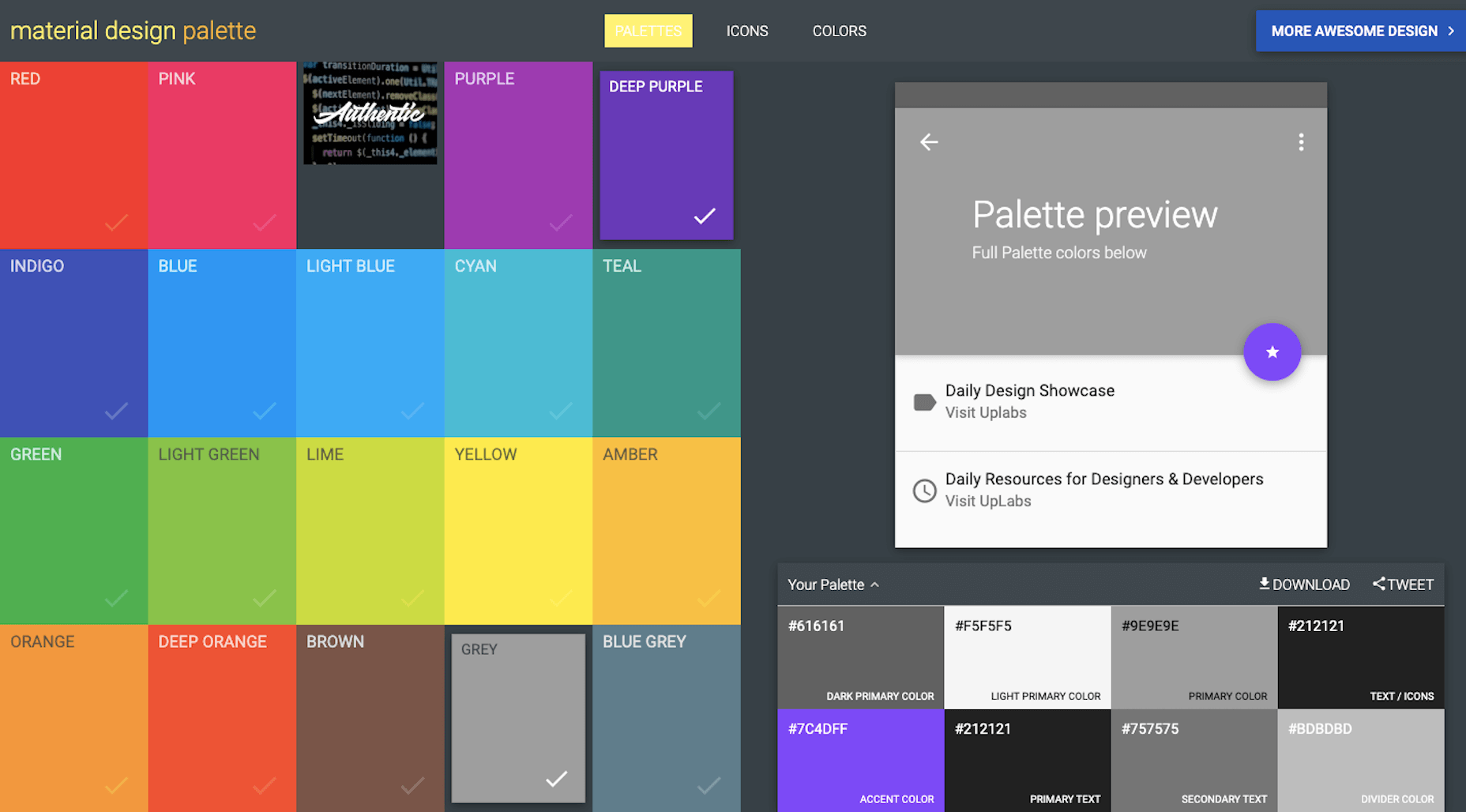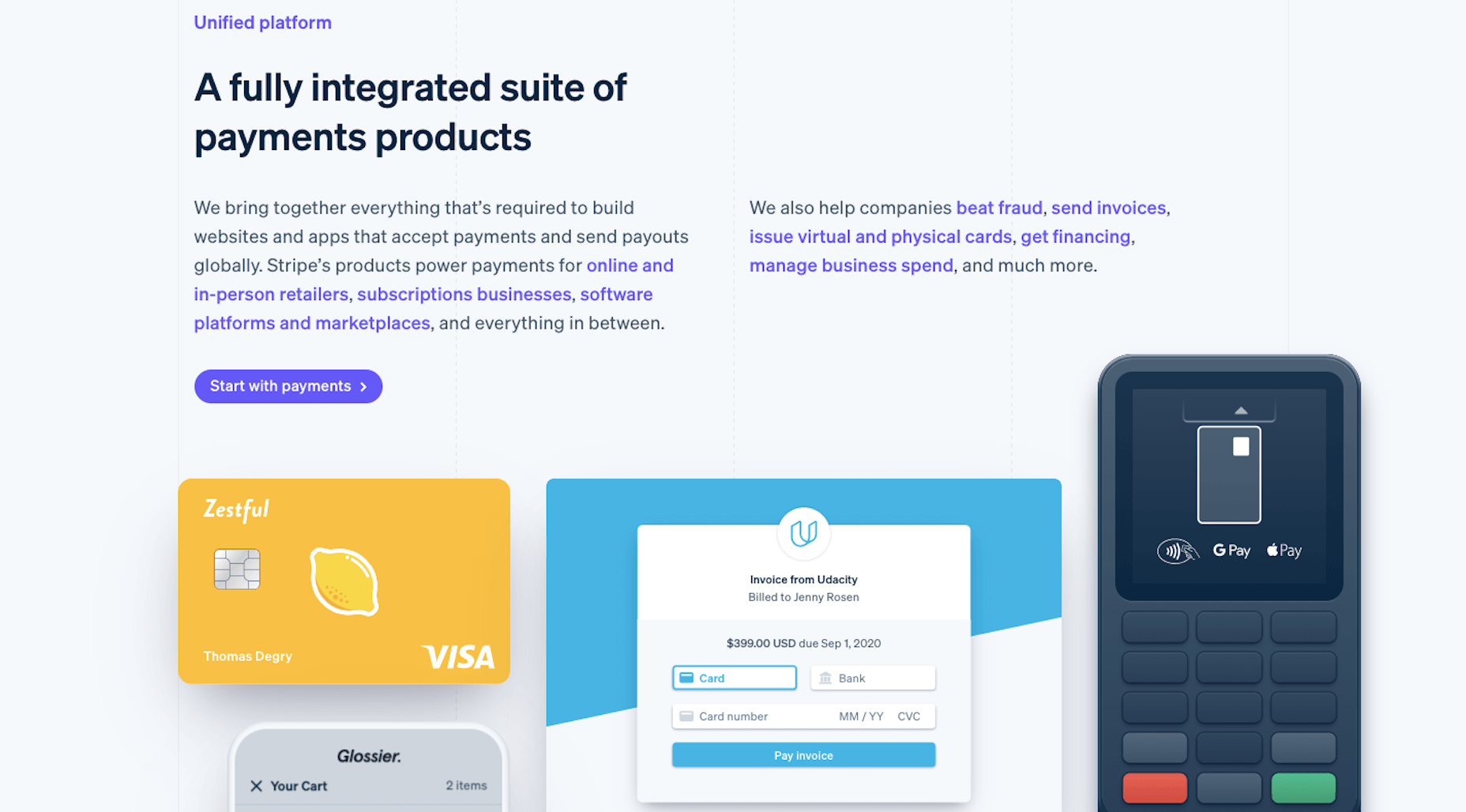The Influence of Visual Identity
The visual elements you display to website visitors, social media followers, and consumers shape their perceptions of your brand. Perhaps your brand exudes whimsy and caters to a youthful audience, offers cutting-edge technological solutions to critical issues or comprises a pioneering entrepreneur carving out new ways for us to communicate. Effective brand imagery subtly communicates your brand ethos, core values, and objectives without needing to utter a word. Consider your preferred apparel brand – what springs to mind? Taking Athleta as an exemplar, the logo is typically the initial element that resonates with me:  The familiar grey radial motif is omnipresent – on their site, social platforms, and subtly emblazoned on their attire. When Athleta comes to mind, I also visualize its dynamic lifestyle photos:
The familiar grey radial motif is omnipresent – on their site, social platforms, and subtly emblazoned on their attire. When Athleta comes to mind, I also visualize its dynamic lifestyle photos:  Instead of isolating the clothes, the brand regularly features individuals sporting Athleta gear while engaging in activities like trail hiking, beach strolling, or studio workouts. These two visual staples reveal volumes about the brand:
Instead of isolating the clothes, the brand regularly features individuals sporting Athleta gear while engaging in activities like trail hiking, beach strolling, or studio workouts. These two visual staples reveal volumes about the brand:
- Athleta caters to an active female demographic, evident from its images and calls-to-action. Even the logo’s refined design suggests as much.
- The clothing line is understated yet incredibly functional, reflected in product snapshots and the brand’s preference for muted colors and straightforward fonts throughout its visuals.
- Athleta champions a healthier, balanced lifestyle for its customers, which is both conveyed through vibrant product shots and also inferred from the logo’s symmetrical composition.
Visuals can be employed overtly – through chosen photography or illustrations – or subtly, via nuances in color schemes, typeface selections, structure, and more.
Composing a Visual Identity for your Brand
Let’s breakdown the constituent elements that comprise a brand’s visual identity:
Choosing a Color Palette
Remember, your audience’s needs should dictate your choices – color selection included. Start by determining an anchor color. The Canva color meanings and symbolism resource can be a valuable tool here.  Explore the plethora of shades and understand what each hue signifies. Every color has a backstory, ranging from historical uses to psychological influence on people. Though emotional reactions to colors are noteworthy, they shouldn’t be your sole criterion. Aim for hues that enhance, rather than distract from, the user experience. Creating a Robust Color Palette Proceed to build a comprehensive palette, starting with a primary color, used in your logo, and then expanding to a palette suitable for your website and other branded channels. The Material Design Palette is a solid choice for this process:
Explore the plethora of shades and understand what each hue signifies. Every color has a backstory, ranging from historical uses to psychological influence on people. Though emotional reactions to colors are noteworthy, they shouldn’t be your sole criterion. Aim for hues that enhance, rather than distract from, the user experience. Creating a Robust Color Palette Proceed to build a comprehensive palette, starting with a primary color, used in your logo, and then expanding to a palette suitable for your website and other branded channels. The Material Design Palette is a solid choice for this process:  It’s limited but provides clarity on the purpose of each color, allowing for fine-tuning to suit your brand.
It’s limited but provides clarity on the purpose of each color, allowing for fine-tuning to suit your brand.
Typography
Crafting the right font style is pivotal—it must be easily legible while alluding to your brand’s character. Establish the font categories that best match your brand, such as sans serif for simplicity or serif for a traditional tone, and explore reliable resources for sourcing fonts. Aim to select a maximum of three typefaces: one for headers, one for body text, and optionally, one for your logo or standout elements. When pairing fonts, opt for those that offer distinct contrasts yet harmonize well together, reinforcing a unified message to your audience. Use tools like FontPair to find suitable complementary fonts.
Imagery
All visual content, including photos, videos, illustrations, and icons, fall into this category. The challenge is discerning which type of imagery aligns with your company’s persona. For example, tech firms like Stripe often adopt illustrative designs in their branding:  Consider the visual content types that would foster a connection between your audience and your offerings.
Consider the visual content types that would foster a connection between your audience and your offerings.
Consider the style of your visuals – whether it’s applying a consistent filter to photos, ensuring a uniform background for product images, or adopting a unique illustrative approach for certain product lines. Don’t hesitate to tweak standard imagery to better suit your brand’s tone.
Logo
Your logo caps off the visual identity process. With a clear brand identity, company name, and chosen visual components in place, the creation of a meaningful, robust, and memorable logo is within reach. You have several paths to achieve this: design one yourself, utilize design tools, or hire a professional. Each option has its merits, dependent on your expertise and the customized appeal you seek.
Conclusion
In the upcoming segment of this three-part series, we turn our attention to launching your business in the digital realm. We’ll interlace your business name, brand identity, and visual signature, applying them to your online presence and selecting the most effective marketing channels for your venture.

